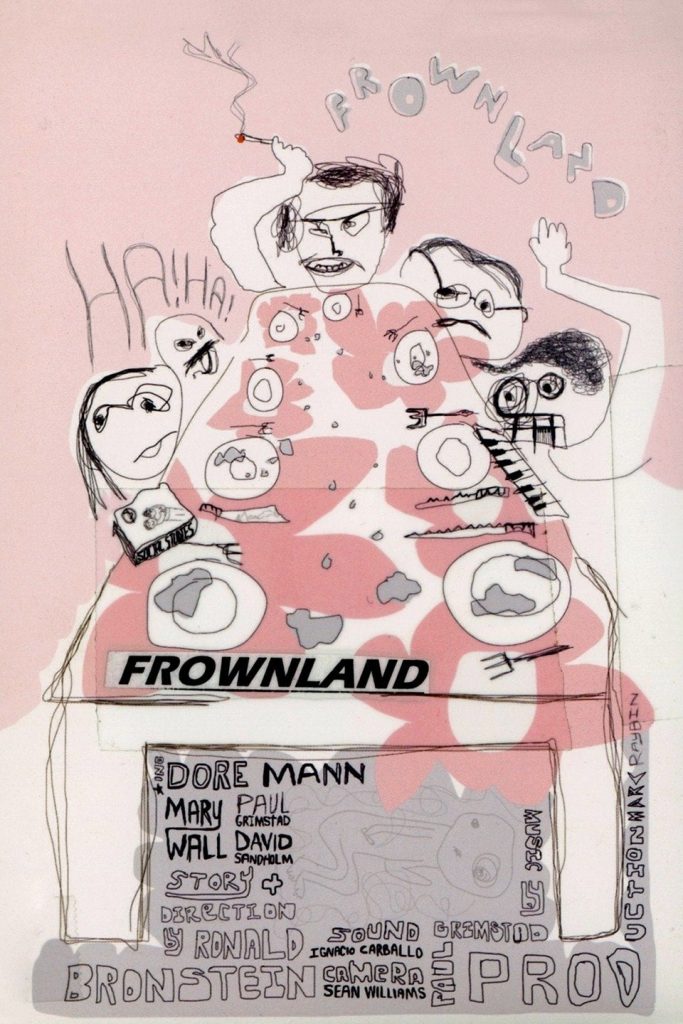Amanda Crouse
A&E Editor
Keith lives in New York in a sardine-tin apartment with a roommate he’s afraid of and an electricity bill that just can’t seem to get paid on time. He spends his days in the suburbs, walking door-to-door and selling coupon pamphlets to raise money for a shady Multiple Sclerosis research fund. At night, he stalks the streets or stews in his apartment or sits in his girlfriend’s car as she drives around crying for unknown reasons.
Wherever he is, whatever he’s doing, Keith inevitably, at the same time, is being strangled by his own fear of words. His mouth hangs agape (Jacob Marley without the head bandage?), eyebrows furrow so intensely that his forehead seems as if it’s going to fold in on itself. He strokes his face so obsessively and with such vigor that one almost expects the skin on his cheeks to wear down to the bone. Keith clearly possesses a desire to speak, to connect with people through conversation — and yet, even when he does manage to get a few words out, they’re either incoherent interjections or rambling apologies that do nothing to endear his peers to him.
He is not simply awkward but bizarre, a caricature of social anxiety living among people whose reactions to his presence are exactly the ones that overthinkers like himself dread to the point of self-destruction. Ronald Bronstein’s 2007 film “Frownland” contains little more than scenes just like this; it is 106 minutes of painfully ungraceful conversation involving a man whose face has frozen into an expression of primal fear — but wait I swear it’s still an amazing movie please keep reading please.
In the movie’s opening scene, protagonist Keith is struggling to extend sympathies to his crying girlfriend, Laura (who is either still in high school or merely carries the backpack and despondent gaze of a seventeen year-old). He sits in the passenger’s seat of her car, wordlessly working his jaw’s rusty hinges for a harrowing two minutes. In the end, all he can cough up is an “um”-laced anecdote about a childhood experience that apparently affected his ability to express compassion. Laura rolls her eyes and keeps crying and Keith sits beside her, looking horrified and helpless. It is a painful first scene that does a fine job of sparking sympathy among viewers for the poor, fidgety protagonist.
Dore Mann’s performance as Keith is the palpitating heart at the center of Frownland’s charming and agonizing story — but to be sure, all members of the small cast are impressively adept in their roles as various Assholes, Pricks and Jagoffs.
There seems to be an interpretive divide among the viewers of “Frownland.” Some reviews I’ve read have lauded the depiction of social anxiety, but also say that they found the film excruciating to watch primarily because of the intense realism. Others seemed turned off entirely by the anxiety that gnaws at the foreground of every scene, writing off the movie as wholly unpleasant. When I watched “Frownland” for the first time, though, I saw a comedy rather than a brooding drama. Each of the film’s characters is an absurd spoof of the most annoying or angsty person you knew in high school; for me, it was the caricature-ness of those parodic blockheads that served as an apt chaser for the rest of the film’s steady, throat-burning stream of second-hand embarrassment.
I’ve recently watched a good number of shot-on-video (SOV) movies, and have discovered in the process how drawn I am to the air of intimacy permeating those hand-held, self-funded narratives that unfold in the same apartments in which they were conceived. Seemingly dull plot synopses take on a hypnotic charm when captured in the dream-like grain of home-movie ephemera. The 16-mm world of “Frownland” maintains its magnetism despite a sad and alienating plot by establishing visual intimacy in its mimicry of the SOV format — a closeness with the viewer that prevents the oncoming spate of torturous conversation from crossing over into a realm of the grotesque.
If we’re going by straight numbers then I’d give this talkie a 10/10. Take your dame out to the picture house the next time “Frownland” is playing. And buy her some Junior Mints because ladies love Junior Mints.

